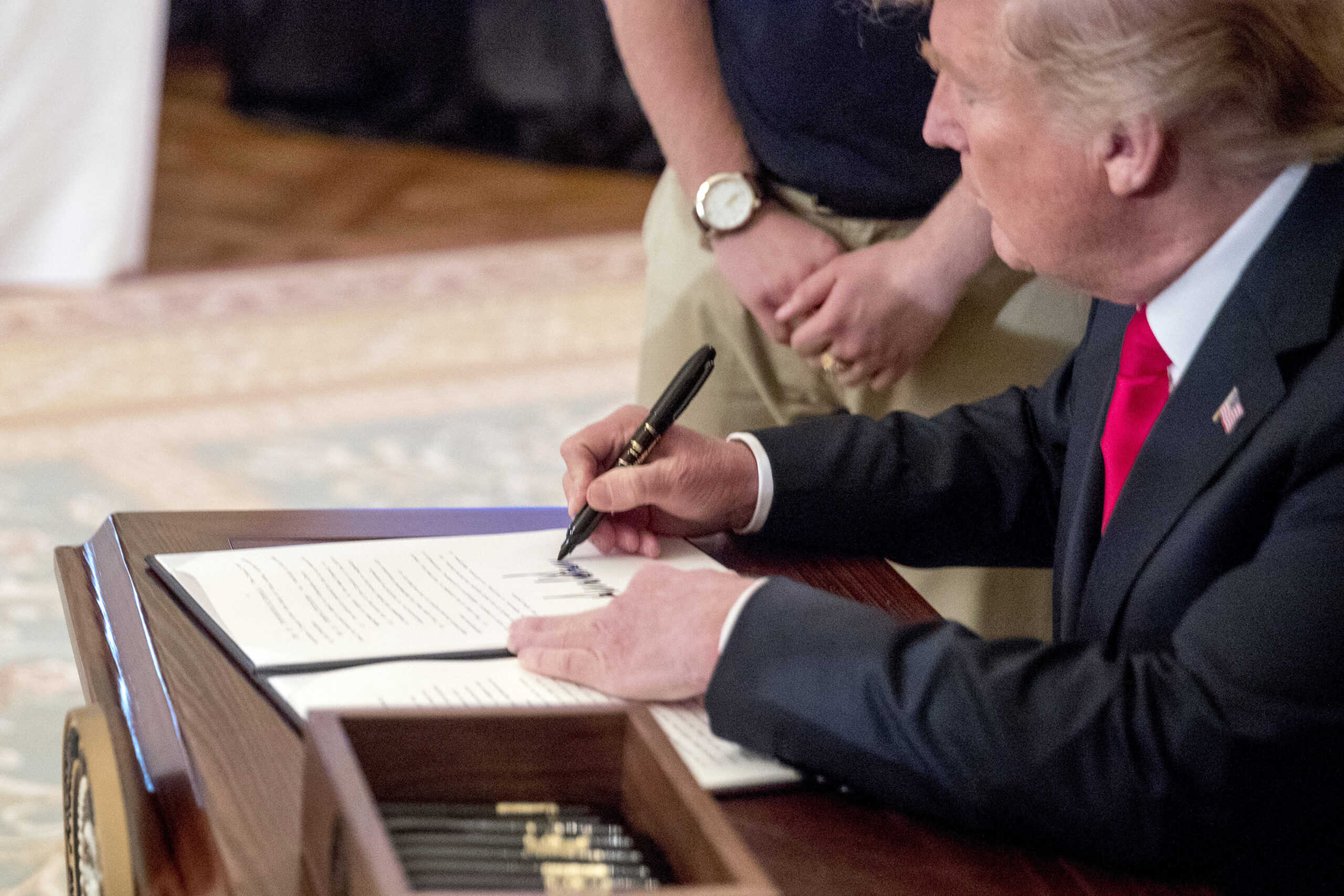
The passage of The Big Beautiful Bill (OBBBA) on Friday, July 4th, marks a decisive recalibration of U.S. clean-energy policy and incentive structure—elevating urgency, compliance, and strategic flexibility for corporations. The upending of financial incentives create a real-time operational challenge. Boards must respond by aligning capital schedules, fortifying supply chains, and taking out cost from their decarbonization strategies. How should enterprises evolve their capital allocation for operational effectiveness, ESG targets, and financial return?
Key takeaways:
- Boards must aggressively understand their exposure to – and the impacts – of the renewable energy tax credit policy reset and timelines
- Projects based on extended IRA forecast may no longer meet the expected financial ROI and will face urgent timelines and potential supply chain constraints
- Manufacturers and energy companies that benefited from the IRA’s $388 billion clean-tech investment may lose momentum, potentially causing an estimated 2.2 GW of projects to stall and projected economies-of-scale to take longer to materialize
- Companies seeking to remain leaders in clean energy deployment should look to China as a source of global innovation
- AI can play a role in removing the cost from corporate decarbonization efforts for corporations to maintain their existing ESG targets and mitigate reputational damages
With significant modifications to the renewable energy tax credits, the OBBA accelerates the phase-out or termination of certain clean energy incentives and introduces stricter requirements for others. The key changes include:
- Termination of IRA incentives. The OBBBA terminates several green energy incentives, including those for electric vehicles and residential energy efficiency, either at the end of 2025 or within a year of the law’s enactment
- Stricter requirements. The bill introduces more stringent domestic content rules and foreign entity restrictions for projects seeking to claim clean energy tax credits. The act imposes stricter requirements regarding the origin of materials
- Accelerated phase-outs. Some existing tax credits will be phased out or expire more quickly than initially stipulated in the IRA
- Technology-neutral credits. The OBBBA restricts the ability of projects to qualify for the tech-neutral clean electricity tax credit (45Y) and investment tax credit (48E). This includes projects (i) for which construction begins more than 60 days following the act’s enactment or (ii) that are placed in service after 2028
- Limited exceptions. Exceptions to the early phase-out for solar and wind facilities may be limited or not apply to projects exceeding certain size thresholds or with significant federal land involvement
- Carbon capture credits. The OBBBA does not accelerate the expiration of the Section 45Q Carbon Oxide Sequestration Credit
- Clean Hydrogen production credit. The OBBBA terminates the Section 45V credits effective for projects on which construction commences after December 31, 2025, which is seven years earlier than the IRA’s original sunset date
- Clean fuel production credit extended. While the clean fuel production credit was extended through 2029, new restrictions were imposed on feedstocks, thus limiting eligibility to those produced in the U.S., Mexico, or Canada starting in 2026

What will the implications be for the U.S.’s decarbonization goals?
The implications will be severe to the U.S. energy mix, grid, clean energy transition, and decarbonization. Energy analysts predict the repeal of these energy tax credits will reduce new additions of clean technologies to the grid by 50-70% in 2035. Regarding greenhouse gas emissions, under the IRA, America was on track to cut GHGs by 40% from 2005 levels by 2035. A de facto repeal would reduce that by more than ten percentage points, as shown below.

Some states will face larger potential losses than others
The Clean Investment Monitor, a joint effort between Rhodium Group and MIT’s Center for Energy and Environmental Policy Research (CEEPR), has identified $522 billion worth of clean energy investments that were announced from mid-2022 through Q1 of 2025 that have yet to come online. These facilities represent new and expanded clean electricity generating facilities: solar and geothermal plants, new clean industrial sites like sustainable aviation fuel (SAF) and clean hydrogen production facilities, and new manufacturing sites building clean energy assets (e.g., batteries, zero-emitting vehicles (ZEVs), wind turbines, and solar panels).

| State | Invested | Outsanding | Total announced |
|---|---|---|---|
| Texas | $62,288 | $128,497 | $190,784 |
| California | $34,019 | $38,783 | $72,803 |
| Louisiana | $2,811 | $40,140 | $42,951 |
| Georgia | $22,775 | $15,516 | $38,292 |
| Arizona | $18,811 | $17,834 | $36,645 |
| Michigan | $16,415 | $13,528 | $29,944 |
| Indiana | $10,214 | $13,722 | $28,936 |
| Nevada | $11,343 | $16,959 | $28.30 |
| Virginia | $4,149 | $13,912 | $23.36 |
| North Carolina | $16,196 | $7,015 | $23,212 |
| Ohio | $11,406 | $10,063 | $21,469 |
| New York | $6,700 | $14,719 | $21,418 |
| Illinois | $6,136 | $14,001 | $20,437 |
| Tennessee | $11,060 | $8,509 | $19,569 |
| South Carolina | $7,020 | $12,074 | $19,094 |
Without tax credits, a renewable energy strategy can still be a win+win for large U.S. multinationals to achieve cost-effective and environmentally positive outcomes.

Actions boards can take:
- Accelerate or defer clean energy projects carefully. Immediately inventory pipeline projects; confirm construction start dates pre-July 2026 and in-service by the end of 2027. Prioritize completion of those with strongest financial and decarbonization and ESG returns
- Enhance supply chain due diligence and traceability. Embed compliance reviews in supplier charters. Institute traceability protocols and attestations to meet foreign-content mandates
- Update financial models and capital plans. Reevaluate IRR and NPV projections with the updated tax and incentive conditions. Adjust funding strategies to account for higher effective costs as appropriate
- Broaden energy strategy. Explore investment in complementary assets — nuclear and SMR technology, battery storage, emerging clean tech, hydrogen, carbon capture – with special attention to clean tech innovation in China
- Evaluate ESG implications and impact to enterprise decarbonization KPIs. With enterprise goals to lower emissions portfolio, evaluate impact to net-zero targets and plan. Evaluate options to maintain progress as well as reputational risk for rolling back targets
- Enhance board education. Ensure directors on Sustainability, Finance, and Risk committees understand the timelines and policy complexity
- Strengthen inter-committee coordination. Create joint oversight between Audit, Sustainability, and Strategy Committees
Questions for the boardroom:
- Which projects must be accelerated to meet deadlines before credit expirations? What is the viability of doing so?
- What complementary assets could be included in current – or upcoming – projects to continue to qualify for tax credit?
- What exposure do we have to credits that may be clawed back or rejected?
- Are our controls robust enough to validate foreign content disclosures? How do we need to enhance our supply chain traceability standards and protocols?
- How are we managing the trade-off between stated ESG goals and shifting incentives?
- What no-regrets investment can we make to improve energy security and efficiency that hedge against further policy swings?
- How should our capital allocation evolve under multiple incentive scenarios?
- How are we using AI to make our decarbonization strategy more cost-effective?
Additional Telesto resources:
- Atlas, equips your organization’s corporate directors and leaders with the insights and knowledge necessary to stay up to date, mitigate risks, and seize business opportunities associated with sustainability, climate, and ESG
- Board series: The Kitchen Sink Committee – AI, Cyber, ESG, and, now, tariffs. Are Audit Committees ready
- Board series: When trade policy meets the balance sheet – Impairment pressures mount for the audit committee
- Prism, our ESG benchmarking tool, helps your organization to rapidly strengthen its sustainability, climate, and ESG performance and disclosures through in-depth benchmarking of industry peers and identification of gaps and areas of distinction
- Recently released by Telesto Strategy’s CEO & Founder, Alex Kruzel, The Courage to Continue: Stay the Course on Sustainability to Secure our Future, explores the connection between corporate priorities and President Trump’s national security agenda
Connect with us today to turn policy disruption into strategic opportunity and position your board at the forefront of the energy transition.




